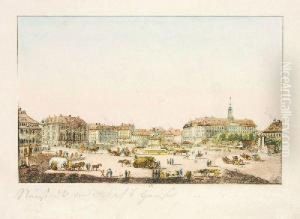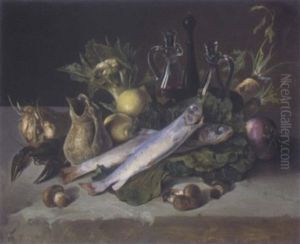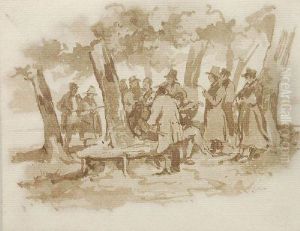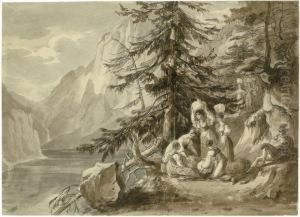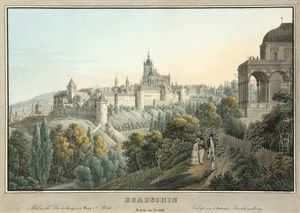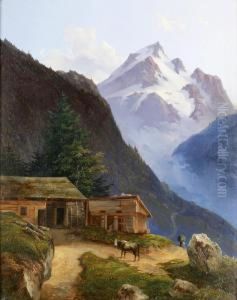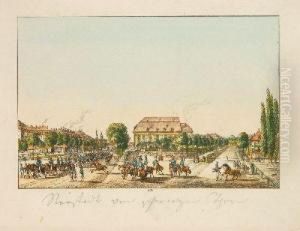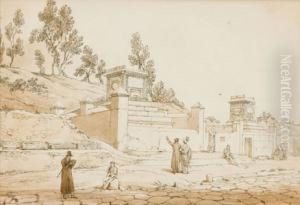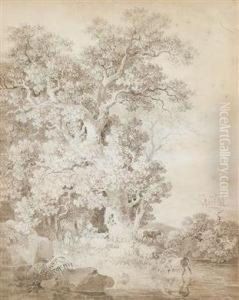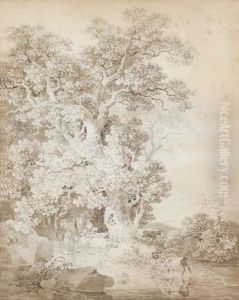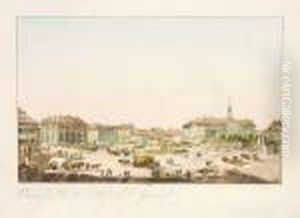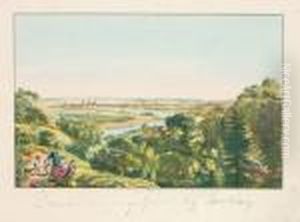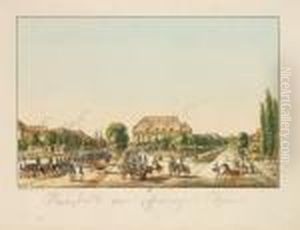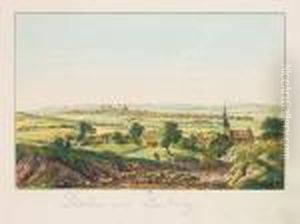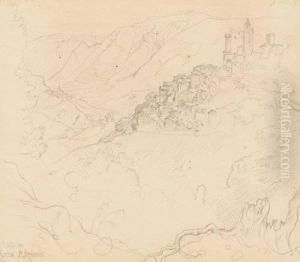Carl August Richter Paintings
Carl August Richter was a notable figure in 19th-century art, born in 1795 in Dresden, Kingdom of Saxony. He was part of a distinguished family of artists, being the son of the famous German painter Adrian Ludwig Richter, who was a key figure in the Romantic movement. Despite the prominence of his father, Carl August developed his own unique style and approach to art, which was influenced by the Romantic movement but also showed elements of realism.
Richter's early life was immersed in the artistic environment provided by his family, and he received his initial training from his father. This foundational period was crucial in developing his skills and fostering a profound appreciation for nature and the landscape, themes that would dominate his work throughout his career. He furthered his education by studying at the Dresden Academy of Fine Arts, where he was exposed to a wider range of artistic theories and techniques.
Throughout his career, Carl August Richter embarked on numerous travels across Europe, particularly in the picturesque regions of the Alps and Italy. These journeys played a significant role in expanding his artistic horizon and providing him with a wealth of inspiration for his landscapes. His works from this period are characterized by their detailed depiction of nature, sensitivity to light, and a subtle interplay of colors, which capture the mood and atmosphere of the landscapes he encountered.
Despite living in the shadow of his more famous father, Carl August Richter made significant contributions to landscape painting in the 19th century. His works were well-received in his time, and he participated in several exhibitions, gaining recognition among his peers and the public. After his death in 1856, his legacy continued through the appreciation of his landscapes, which are celebrated for their emotional depth and technical precision.
Richter's art remains a testament to the 19th-century landscape genre, bridging the gap between Romanticism and Realism. His dedication to capturing the essence of nature, combined with his technical skill, has ensured that his work continues to be admired by art historians and enthusiasts alike.
